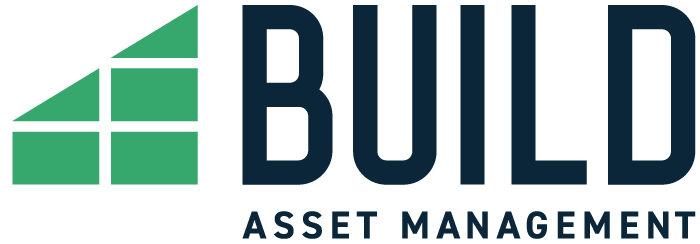The employer-sponsored 401(k) plan comes as a given nowadays in many full-time, salaried positions in the United States. Along with paid time off (PTO) and health insurance, it’s an expected part of a company’s “competitive benefits” package. Not only is it a benefit, but it’s also the financial lifeline that retirees rely on to live beyond their working years. The introduction of the defined-contribution plan as we know it only occurred forty-two years ago, in 1978. In 2020 the average retirement age was 65 for men and 63 for women [1]. Therefore, if they began saving in a 401(k) right after college at about 22, the first generation of 401(k) retirees only began tapping into their accounts in 2018. Now, as the program unleashes its first graduating classes, it’s worth visiting the lead up to employee contribution plans, the changes in the program, and what is next to come.
Retirement plans are a relatively modern concept. Although military pensions had existed in some form since 14th century Rome [2], and the U.S. government began supplying municipal pensions in the mid-1800s [3], American corporations didn’t begin offering them until 1875 [4]. The American Express Company was once a leader in freight forwarding [5], and as it happens, retirement offerings. They began the company-funded program to offer worn employees a way to stop working. At the time most working-class adults simply worked until they died or had children who could provide for them. It was a kind gesture to the workforce who had dedicated their lives to the business.
It wasn’t long, however, until companies who had begun these offerings realized how expensive [6] a pension program would be. Less than two decades after launching its program, American Express added stipulations such as having twenty years of service and being over forty years old to qualify. Shortly after, other companies enacted similar regulations.
In the early 20th century pensions became more readily available. Then, provisions in the 1921 and 1926 Revenue Acts allowed businesses to deduct pension contributions from their corporate income and granted tax free accumulation of the pension fund’s portfolio [1]. This made it slightly more affordable to grant employees access to retirement benefits.
In 1930 only about 15% [6] of American workers had access to a retirement plan. By the 1970s it was up to 45% [7]. As the amount of savings in retirement plans grew, the need for regulation became clear. To prevent some of the ongoing fund mismanagement, the 1974 Employee Retirement Income Security Act, or ERISA, was implemented. It crafted stricter rules on the investment and payout of company retirement plans. It stated that plan participants must receive information on the contents of their plans, as well as setting standards of conduct for plan managers. This act made it possible for investors to experience more control and transparency within their retirement savings.
In 1978, another major movement for retirement savings occurred. A new way to save was introduced in the form of the 401(k) deferred compensation plan [9]. The 401(k) would allow American workers the chance to submit a portion of their income towards a pre-taxed fund, that then could be accessed without penalty after a participant turned 59 ½ or met another special qualification such as a disability. The 401(k) plan had originally been designed [7] to offer additional retirement benefits to the pension plans already in place. The concept spread quickly, growing from just over 7 million participants in 1983, to 38.9 million a decade later.
By 1999 the amount of 401(k) plans had surpassed the number of pension plans 60.4 million to 40.1 million. The plans were popular for investors, because they could save a portion of their income tax free, and they could participate in market growth. They were also beneficial to employers as a much cheaper alternative to the traditional pension.
There is, of course, a downside to the 401(k), which falls predominately on the investor. It’s a lot riskier than the often federally insured pension plans.
If a large market downturn were to occur, the losses would hit employees directly[9], which is exactly what happened in 2008. Within a matter of weeks, the market drawdown caused 2.4 trillion dollars in losses for American 401(k) and IRA plans [10]. Half of Americans over sixty with retirement funds lost over 20% of their portfolios. For those 30-50 years old it was a staggering 30%. The system that was set up to provide financial security to retirees had not been able to withstand the volatility of the changing market. It left millions with a limited or completely diminished path to recovery.
For those who were nearing or in retirement these losses were felt acutely. A few offerings, such as target date funds, had become popular by automatically rebalancing savings away from risk assets (stocks) and toward a higher concentration of fixed income as the investor got closer to retirement. Although they were developed as a solution to market volatility, the average net returns for near-dated or in-retirement target date funds in 2008 was -24.16% [11]. Eventually the market recovered its losses, and by 2019 investors saw an average of a 466% increase to 401(k) plans [12]. However, this was little solace for the many near-and-in-retirement investors who potentially had to defer retirement to a later date or pick up a part-time job to bridge the shortfall caused by those losses. The extended bull market of the 2010s also covered up the fact that the risk of target date funds is still present, primarily because as yields on fixed income investments dwindle to near 0%, target date funds must hold a larger percentage in stocks to deliver returns that will fund a retirement. Current popular 2020 target date funds (in-retirement) hold roughly 50% in stocks and 50% in bonds.
The 2020 COVID-19 market drawdown gave investors another stark reminder of the risks in traditional glidepath-based target date funds, with in-or-near retirement funds suffering double-digit losses as the S&P 500 index dropped more than -34%. While retirement savers enjoyed a sharp v-shaped recovery due in large part to monetary policy by the US Federal Reserve, the risks to target date funds and defined contribution retirement plans remain the same. Unless we see financial innovation away from traditional stock-and-bond glidepath strategies, increased market volatility and zero interest rate policies will continue to threaten retirement savers.
We have conviction that Build’s Conservative Indexed Risk Control™ strategy is just such an innovation and represents a good solution to this change in market conditions. We believe there is a better way to blend fixed income and equity participation than the traditional glidepath-based target date fund. We’ve taken the best of what fixed income still offers in a low interest rate environment–an asset that seeks yield and return of principal–and have created a next gen solution that adds a call options overlay to participate in equity market growth. Options provide the ability to participate in stock market growth with less money invested because they use leverage. If the stock market goes up, our strategy sees leveraged upside returns. If the market stays flat or goes down, we lose the premium we paid for the call options. Because we use less money to participate in market growth, we can invest a greater portion of the strategy in fixed income. In fact, our flagship Conservative strategy holds a minimum of 90% investment grade fixed income while seeking to keep pace with the relative growth of a traditional 30/70 stock-to-bond strategy or an in-retirement target date fund. The strategy also seeks less drawdown and a lower standard deviation of returns than these benchmarks, providing a buffer against sequence of return risk in major market drawdowns. Furthermore, given the composition of our strategy with more than 90% invested in fixed income, many advisors see potential to use it as a bond alternative in addition to a target risk or target date alternative.
When COVID-19 hit, the Conservative strategy had a maximum drawdown of -6.24%, just less than 1/6th that of the S&P 500 and less than half that of the strategy’s benchmark. By the end of 2020 the strategy was up 8.5%, with the options overlay participating in the equity market rally. While still relatively new at just over one year old, we believe 2020 proved our thesis that financial innovation is still possible and that all investors can benefit from it. Our mission over the coming years is to make this strategy available to more investors and retirement savers in 401(k) plans and other vehicles. We believe this will create a more stable experience for working Americans as they save for retirement; aiming to leave the investor with the funds they need when they need them.
The American retirement plan is a relatively modern innovation, and the conditions in which we save for retirement are evolving. The world is changing, and your investing strategies should too. Visit our solutions page for more.
FOOT NOTES
[1] Anspach, Dana. “U.S. Average Retirement Age.” The Balance, The Balance, 3 Jan. 2021, www.thebalance.com/average-retirement-age-in-the-united-states-2388864.
[2] Staff, Seattle Times. “A Brief History of Retirement: It’s a Modern Idea.” The Seattle Times, 31 Dec. 2013, www.seattletimes.com/nation-world/a-brief-history-of-retirement-its-a-modern-idea.
[3] Weaver, Carolyn L. “Support of the Elderly Before the Depression: Individual and Collective Arrangements.” Cato Journal Vol. 7, No 2, Fall 1987, https://www.cato.org/sites/cato.org/files/serials/files/cato-journal/1987/11/cj7n2-15.pdf.
[4] Laskow, Sarah. “How Retirement Was Invented.” The Atlantic, 18 Aug. 2015, www.theatlantic.com/business/archive/2014/10/how-retirement-was-invented/381802.
[5] https://about.americanexpress.com/our-history
[6] Tackett, Michael. “PENSIONS BEGAN AS REWARD, REMAIN EMPLOYER`S OPTION.” Chicagotribune.Com, 3 Sept. 2018, www.chicagotribune.com/news/ct-xpm-1989-12-03-8903140981-story.html#:%7E:text=The%20federal%20government%20recognized%20the,15%20percent%20of%20American%20workers.
[7] Georgetown University Law Center, 2010, https://scholarship.law.georgetown.edu/cgi/viewcontent.cgi?article=1049&context=legal.
[8] Staff Author. “Why Were 401(k) Plans Created?” Investopedia, 28 Jan. 2021, www.investopedia.com/ask/answers/100314/why-were-401k-plans-created.asp.
[9] “General FAQs About PBGC | Pension Benefit Guaranty Corporation.” Pension Benefit Guaranty Corporation, 26 Feb. 2021, www.pbgc.gov/about/faq/pg/general-faqs-about-pbgc#:%7E:text=PBGC%20is%20a%20federal%20agency,set%20monthly%20amount%20at%20retirement.&text=Your%20plan%20is%20insured%20even,to%20pay%20the%20required%20premiums.
[10] Ghilarducci, Teresa. “Big Retirement Losses If The Market Crashes Tomorrow.” Forbes, 15 Dec. 2020, www.forbes.com/sites/teresaghilarducci/2018/12/05/big-retirement-losses-if-the-market-crashes-tomorrow/?sh=432aff7e7dab.
[11] Hallez, Emile. “Market Plunge Tests Performance of Target-Date Funds.” InvestmentNews, 9 Mar. 2020, www.investmentnews.com/market-correction-tests-target-date-funds-189521.
[12] Young, Katie. “401(k) Balances Skyrocket in the Decade Since the Market Bottom.” CNBC, 20 May 2019, www.cnbc.com/2019/05/09/401k-balances-skyrocket-in-the-decade-since-the-market-bottom.html.


